
Aganisia is a small South American genus in the orchid family (Orchidaceae), subfamily Epidendroideae.
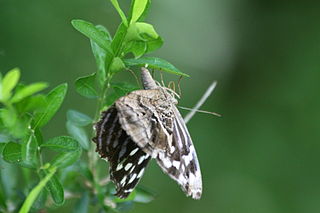
Adelia is a genus of flowering plants in the spurge family, Euphorbiaceae, subfamily Acalyphoideae. It is native to Latin America and the Caribbean, with one species extending northward into the southernmost part of Texas.
Bernardia is a plant genus of the family Euphorbiaceae first described for modern science as a genus in 1754. It is native to North and South America, as well as the West Indies.
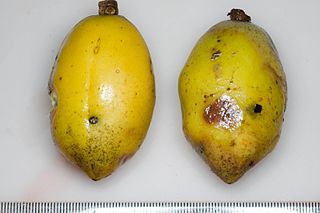
Glycydendron is a genus of plants, under the family Euphorbiaceae first described as a genus in 1922. It is native to South America.
- Glycydendron amazonicumDucke - French Guinea, Suriname, Guyana, Ecuador, Peru, Bolivia, northwestern Brazil, possibly Colombia
- Glycydendron espiritosantenseKuhlm, - State of Espirito Santo in Brazil
Dendrothrix is a plant genus of the family Euphorbiaceae first described as a genus in 1996. It is native to southern Venezuela and northwestern Brazil.
- Dendrothrix multiglandulosaEsser - Amazonas State in Venezuela
- Dendrothrix wurdackiiEsser - Amazonas State in Brazil
- Dendrothrix yutajensis(Jabl.) Esser - Amazonas State in Brazil; Amazonas & Bolívar States in Venezuela
Pseudosenefeldera is a plant genus of the family Euphorbiaceae first described as a genus in 2001. It contains only one known species, Pseudosenefeldera inclinata, native to Panama and to northern and west-central South America.
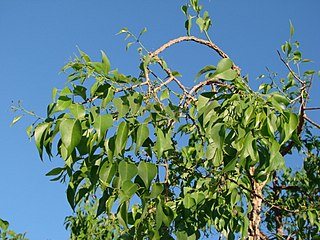
Agonandra is a genus of plants in the family Opiliaceae described as a genus in 1862.

Aspidosperma ulei is a timber tree native to Brazil, Venezuela, Colombia, Guyana, and Suriname.

Dalechampia dioscoreifolia is a species of plant in the family Euphorbiaceae first described in 1841. It is native to Central America and northern and western South America.

Cycnoches haagii is a species of orchid native to tropical South America.

Discyphus is a genus of flowering plants from the orchid family, Orchidaceae. It is the only genus in the subtribe Discyphinae of the tribe Cranichideae. It contains only one currently recognized species, Discyphus scopulariae, with two accepted varieties:
Uleiorchis is a genus of myco-heterotrophic flowering plants from the orchid family, Orchidaceae. There are two known species, native to Central and South America.
Polyotidium is a monotypic genus of flowering plants from the orchid family, Orchidaceae. The sole species is Polyotidium huebneri, native to Colombia, Venezuela and Brazil.

Psilochilus is a genus of flowering plants from the orchid family, Orchidaceae. It is native to South America, Central America, Mexico and the West Indies.
- Psilochilus carinatusGaray - Colombia
- Psilochilus dusenianusKraenzl. ex Garay & Dunst. - Venezuela, Brazil
- Psilochilus macrophyllus(Lindl.) Ames - widespread from central Mexico and the West indies south to Peru
- Psilochilus maderoi(Schltr.) Schltr. - Colombia
- Psilochilus modestusBarb.Rodr. - Venezuela, Brazil
- Psilochilus mollisGaray - Ecuador
- Psilochilus physurifolius(Rchb.f.) Løjtnant - Venezuela, Guyana
- Psilochilus vallecaucanusKolan. & Szlach. - Colombia

Quekettia is a small genus of orchids classified in the subtribe Oncidiinae. This genus is found in the humid lowlands of Brazil, the Guianas, Venezuela, Ecuador and Trinidad.

Amasonia is a genus of plants in the family Lamiaceae, native to South America and to the island of Trinidad.

Eltroplectris calcarata, the longclaw orchid, is a terrestrial species of orchid. It is native to Florida, Bahamas, Cayman Islands, Cuba, Hispaniola, Jamaica, Puerto Rico, Windward Islands, Trinidad, Suriname, Venezuela, Colombia, Peru, Brazil, and Paraguay.
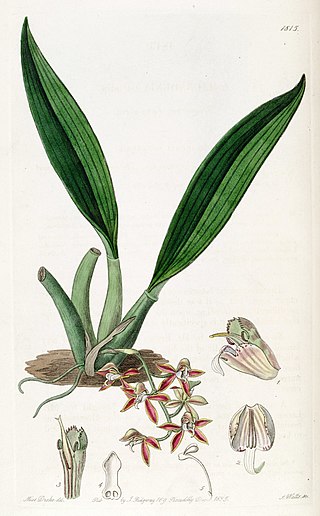
Macradenia lutescens is a species of epiphytic orchid known by the common name longgland orchid. It is native to South America, the West Indies, and southern Florida.
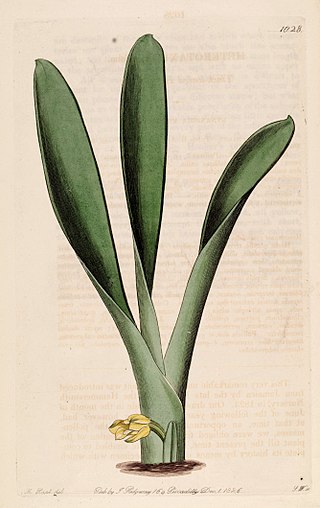
Maxillaria crassifolia, synonyms including Heterotaxis sessilis, is an epiphytic orchid widespread across the West Indies, Central America, southern Mexico, Florida and northern South America. Hidden orchid is a common name.
Maxillaria petiolaris, synonym Hylaeorchis petiolaris, is a species of epiphytic orchids native to northwestern South America. When placed in the genus Hylaeorchis, it was the only species.














